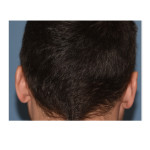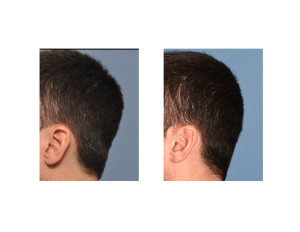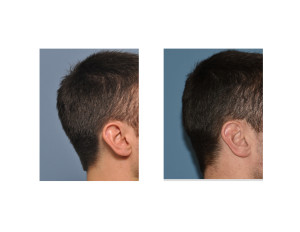Background: The skull is prone to numerous aesthetic deformities and the back of head is a common area that is affected. The most common deformity of the back of the head is excessive flatness or asymmetry. The least common aesthetic deformity is an excessive projection or development of the bone.
An occipital protrusion or excessive projection of the back of the head is most commonly caused by any number of expressions of a congenital sagittal craniosynostosis deformity. The entire skull is long and narrow from front to back and an excessive back of the head protrusion is part of it. But there are patients with otherwise acceptable heads shapes that just have an isolated and excessive occipital projection.
Treatment of an occipital protrusion is done by a bone burring method. The amount of projection reduction is a function of the thickness of the outer table of the skull. This thickness can vary, being anywhere from 5 to 8mms in most patients. That amount of bone may not sound significant but can produce noticeable aesthetic improvements as the following case illustrates.
Case Study: This 40 year-old male was bothered by the protrusion on the back of his head. The upper portion of the occiput had a noticeable fullness that made the back of his head look long.
Under general anesthesia and in the prone position, a 9 cm long incision was made to expose the entire back of his head. A rotary handpiece and burr was used to reduce the thickness of the bone 6.5mms at its most prominent area. The bone reduction was taken down to the dipolic space where the bleeding becomes more excessive. A drain was used and removed the following day.

Occipital skull reduction is not a procedure that is associated with dramatic amounts of bone reduction. The results are always limited due to being able to safely remove only about 1/3 of the thickness of the skull bone. But aesthetic improvements in the protrusion of the back of the head in properly selected patients can be achieved within these limits.
Highlights:
1) Protrusions of the back of the head can be reduced based on the thickness of the out7er layer of the skull.
2) Occipital skull reduction is done by a bone burring method.
3) A small horizontal scalp incision on the back of the head is used to perform occipital skull reduction.
Dr. Barry Eppley
Indianapolis, Indiana




